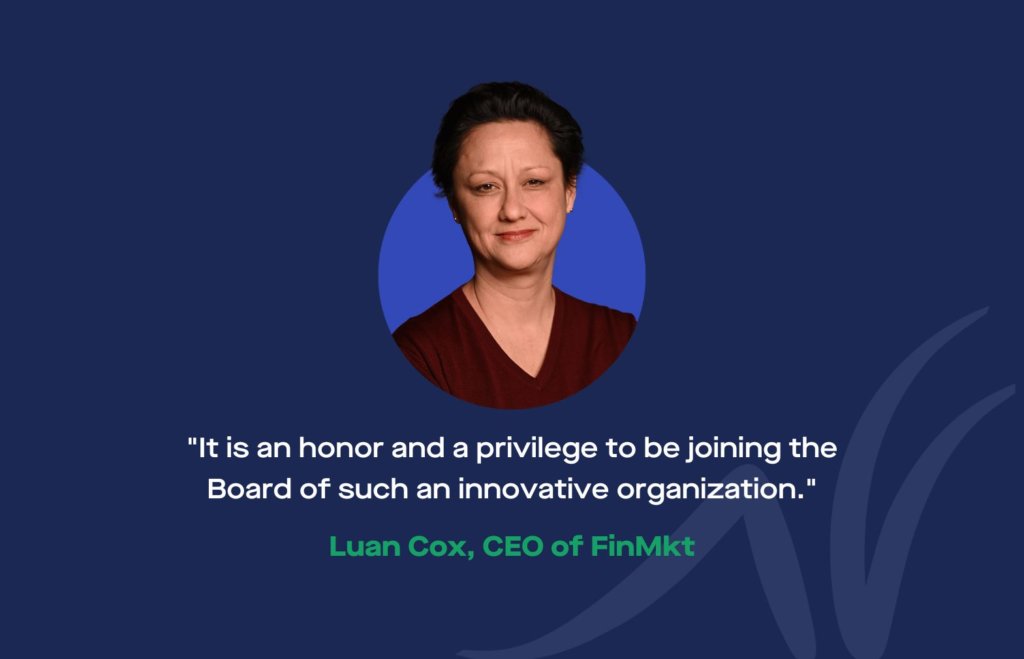With the start of a fresh year, the dynamic landscape of banking is gearing up for significant transformations in 2024. Technological advancements, changing consumer behaviors, and global economic shifts are set to shape the trajectory of financial services. In anticipation of the changes ahead, we asked a few of our team members to share their insights and predictions for the year. Join us as we delve into the key trends that we expect to see in the year ahead.
Topics: Trends that Shaped the Industry in 2023 | Predictions for 2024 | Lending | Fintech Partnerships | Startup Banking | Small Business Banking | VCPE Banking | SBA Lending | Advice for Startups & SMBs
Trends that Shaped the Industry in 2023
What were the biggest trends that shaped the banking industry in 2023? Any surprises?
- The rapid rise in interest rates and challenges with margin led by much higher cost of funds. The surprise was the enormous and negative impact on several banks. – Mike Butler, President & Chief Executive Officer
- The industry is getting into stiff deposit competition, and it puts traditional community banks at a disadvantage. I think we’re going to continue to see deposit share move towards large banks, tech-forward banks and neo banks. Innovation is key to competing in a deposit market. Risk management and how to run a BaaS program in a safe and compliant way will be at the forefront in 2024. We will continue to see regulatory action against banks that participate in the BaaS space and are not strong in these areas. I also think we will start to get more specificity from regulators on their expectations in this space, and top of the list will be BSA, particularly as it relates to BSA requirements and having full visibility and oversight into activity. I think we will continue to see the emergence of regulatory technology (regtech) providers that can deliver this. Banks will need to invest in regtech to be able to compete in the space. – Chris Mastrangelo, Chief Compliance Officer
- Redundancy, redundancy, redundancy, and enhanced FDIC coverage. Due to the bank failures in early 2023, most bank customers and BaaS partners wanted both redundancies in their banking infrastructure, as well as enhanced FDIC insurance. Fortunately for Grasshopper, we were quick to offer enhanced FDIC insurance for our direct and indirect customers, as well as enable BaaS program redundancies through our partnership with Treasury Prime and their network of Banks. Ultimately, all the bank failures were a big surprise, but most surprising was SVB going down. That was a shock to the startup ecosystem given they were the main provider of venture debt loans. 2024 will be the time for non-bank lenders to step up and take hold of that gap in the market. – Lauren McCollom, Director of Banking-as-a-Service (BaaS)
- Biggest surprise was the consolidation and exit of a lot of BaaS/LaaS banks. We knew there was regulatory pressure, but it was more of a widespread issue than I had realized. Feels connected to the huge ramp up in fintech fundings we saw during the pandemic, similar to the bubble popping in tech. – Luther Liang, Director of Product
- The biggest impact on Fund and Sponsor Banking was the failure of SVB, FRB, Signature Bank and the acquisition of PacWest. These events changed the regulatory and competitive landscape for the foreseeable future. Talent dispersed across the Fund Finance sector, which created several new competitors that are expected to compete in the $20-50 million midsize deal space. The biggest surprise was how fast the banks failed and the resulting “contagion” spread. Traditional venture debt facilities from banks significantly decreased as a result of these bank failures. – Barbara Fleming, Head of Fund & Sponsor Banking
- In the lower middle market, independent (i.e. fundless) private equity firms continue to drive volume, but the lack of high quality deals resulted in fewer deals getting done than most expected. In addition, debt financing has been increasingly difficult for sponsors as banks pull back their risk appetite and focus on deposits, portfolio performance and strategic focus areas to minimize losses and achieve/maintain lofty yield targets. – Matt Deibel, Senior Vice President, Sponsor Banking
- The biggest trend was the contraction that the industry experienced in the regional banking space, resulting in a “flight to safety” where the nation’s largest institutions were perceived as safer options by depositors. Other trends revolved around yield & FDIC insurance. – Sydney Bagrou, Vice President, Fund & Sponsor Banking
- As it relates to SBA Lending, the biggest trends were increased demand for loans, technology integrations, diversity of borrowers and unexpected policy changes. The economic recovery and expansion post-pandemic led to increased demand for SBA 7(a) loans as small businesses sought to capitalize on growth opportunities. There was also a significant push towards digitalization, with more lenders adopting fintech solutions to streamline the lending process. And notable trends were the increased diversity of borrowers, with more initiatives targeting minority-owned and women-owned businesses, and unexpected policy changes that revamped the SBA 7a loan and 504 process and put the SBA world in a spin. – Shane Pierson, SBA National Sales Manager
Predictions for 2024
What are some of the banking trends you expect to see in 2024?
- Trends I expect to see are the continued focus on the cost and sourcing of deposits, a challenging regulatory environment, and M&A activity levels. – Mike Butler, President & Chief Executive Officer
- The lifeblood of a bank is its deposit bases. Deposit gathering has always been a challenging endeavor. Then, for a couple of years, banks were just a wash in deposits, and they were really low cost. The pendulum has begun to shift back towards it being more of a challenge to gather deposits profitably. Banks are going to be thinking more about how to acquire clients, the stickiness of deposits, and the cost. Cost of funds and diversification is going to be really important. We’re also going to be headed towards more digitization both through direct banking and indirectly through Banking-as-a-Service. I think the BaaS market is going to continue to grow while having more of a regulatory spotlight on it than before, and it may become a little bit more “proceed with caution” for FIs looking to enter the space. – Chris Tremont, Chief Digital Officer
- New entrants into BaaS – on both the fintech and bank side – with a niche focus. Continued regulatory scrutiny on BaaS third party risk management. Growth in real-time payments. – Lauren McCollom, Director of Banking-as-a-Service (BaaS)
- Further BaaS/LaaS consolidation. Everyone in the market (fintechs/banks) are picking up the pieces from all that has transpired this year, so the ones that figure it out become stronger than ever. Fintech partnerships with banks are going to be very frothy, so we can expect to see a lot of changes, even with well established programs. Lending will also continue to be challenging for most of next year. – Luther Liang, Director of Product
- Regarding PE & VC firms and venture-backed companies, there will be a lot of client migration across banks as these firms look for new and better-suited bank partners. Portfolio companies will need, and be pushed, to seek debt facilities from non-traditional bank sources and will not be tied to existing banks. More investment deals are anticipated in 2024, although downward pressure on valuations are expected to continue across various investment classes, as well as down rounds for those companies that are able to raise capital. Investors that supported their companies through the trough are in a good position to see favorable exits. –Barbara Fleming, Head of Fund & Sponsor Banking
- I expect FDIC insurance and interest rates to continue to be top of mind in the banking industry. – Sydney Bagrou, Vice President, Fund & Sponsor Banking
Fintech Partnerships
How will fintech partnerships impact the digital banking space in 2024?
- There will be more fintech partners looking for bank partners than ever before. The fintech/bank model will remain the preferred model in 2024 for most fintechs versus trying to obtain a bank charter. The fintechs who have a clear path to profitability will win. – Mike Butler, President & Chief Executive Officer
- More banks and fintechs are going to be seeking partnerships in 2024 than in 2023. With a challenging macro environment and funding tightness, it’s going to be difficult to fund internal growth to build new functionality, and there will be less desire for aggressive cost expansion. Partnerships are generally more efficient for both organizations seeking scale. At the same time, partner bank relationships are under a lot of pressure, which will continue into 2024, so you will see many fintechs and banks reevaluating their relationships and potentially changing them for better security, economics, or expertise. – Luther Liang, Director of Product
- Fintech partnerships will continue impacting the digital banking space in two specific facets. First, given the heightened regulatory requirements many banks may face pertaining to lending, I anticipate that the industry will continue on seeing bank/non-bank partnerships whereas the banks will rely more heavily on their non-bank lending partners to facilitate the needs of their underlying clients. Second, given the difficulty for many fintechs to obtain banking licenses, I foresee an environment where fintech partners will have a continued reliance on the BaaS business model. Given the recent difficulties of BaaS Sponsor Bank’s in the industry, there will be a continued dislocation where a fewer number of BaaS Sponsor Bank’s dominate with more market share. – Sydney Bagrou, Vice President, Fund & Sponsor Banking
- Fintech partnerships can streamline application processes, making it faster and more efficient, and advanced data analytics can lead to better credit risk assessments. This is a must and will be a major focus nationwide. With the implementation of AI, further use of historical and current data owned by fintech partners will lead to more efficient and supported credit decisions. And banks that adopt this as their focus will reap the benefits. Fintech partnerships also help digital banks expand their reach in underserved markets and allow them to offer more tailored financial products. – Shane Pierson, SBA National Sales Manager
Lending
What macroeconomic trends might impact lending?
- Inflation, what the Federal Reserve does with rates, and whether or not we can have the “soft landing” or head into a recession are trends that will impact lending. – Mike Butler, President & Chief Executive Officer
- Rates remain higher for longer, and while the Fed is potentially pausing further increases, it’s not a great environment for traditional loans. Consumer lending will have opportunities to refinance as pandemic-era programs are ending. Businesses will need to watch and wait. It will be a good opportunity for fintech lenders and others with low costs to grow. VC/PE mid to late stage funding is going to start creeping back upwards. There’s a lot of dry powder on the market, and some companies who did first check/series A are going to need to raise, as well as later stage companies who took funding/or held out during the past couple of years and are running out of runway. This means a mix of: more closures of companies who can’t get more funding, more down rounds with lower valuations, and new companies starting to grow who came of age in this environment. – Luther Liang, Director of Product
- The macroeconomic trends that I expect to impact lending are high interest rates, end of runway, increased difficulty to raise capital and the failure of companies that don’t have a compelling value proposition or path towards profitability. – Barbara Fleming, Head of Fund & Sponsor Banking
- From a macroeconomic perspective, I expect inflation and interest rates to continue to be top of mind. If inflation remains, the high interest rate environment we’re in should persist with the Fed deciding to keep rates at elevated levels. As of late, the inflation data has continued to come in lower than anticipated. I anticipate rate decreases to begin Q2 of 2024 as we head to the latter part of 2024, entering into 2025. – Sydney Bagrou, Vice President, Fund & Sponsor Banking
- Inflation and interest rates. Fluctuations in these areas can significantly impact lending conditions. Changes in global trade and economic stability can also affect domestic business and lending. Wars in allied countries could affect the pointed direction that the government takes and what resources it makes available to the SBA program and US-based SMBs. Fiscal policies, tax changes, and government spending can influence small business environments and lending as well. With a vote for the president next year, policy makers will want to make policies to engage voters in their favor. This could positively impact growth in the market. – Shane Pierson, SBA National Sales Manager
Startup Banking
What do startups need in a banking partner to succeed in 2024?
- Solid treasury management tools, digital solutions vs. branch-based, and like all small businesses, ways to make a hectic life easier to manage. – Mike Butler, President & Chief Executive Officer
- Access to capital. Funding sources to be accessible at the early and growth rounds. – Lauren McCollom, Director of Banking-as-a-Service (BaaS)
- Regulatory experience and consistency, strong, stable technology platform and investment in a partnership. – Luther Liang, Director of Product
- Better resources that lead to access to capital and a reduction in operating expenses. – Barbara Fleming, Head of Fund & Sponsor Banking
- Startups need a banking partner that is committed and focused on the broader innovation ecosystem in addition to strong risk management, deep connections, networks, and robust products and services that provide operational efficiencies. – Sydney Bagrou, Vice President, Fund & Sponsor Banking
Small Business Banking
What do small businesses need in a banking partner to succeed in 2024?
- The challenging economic landscape will have small business owners needing more support from their banking partners. Strong digital tools, client-first support and guidance, and a frictionless experience from account opening to servicing is not only a desire of small business owners but will be an expectation from them in 2024. The needs of these small businesses are diverse and will be ever changing, so banks need to have personalized experiences to meet these needs to drive the success of their SMB clients. – Danielle Kane, Director of Small Business Banking
- Easy-to-use digital banking services with high communication and transparency. A client-first mentality is key. Guidance on financial management, especially in a changing economic landscape. And tailored financial products that meet specific business needs. Diverse sets of problems will occur in 2024 that will require capital to help shift small businesses towards future success. Lenders who develop quicker pathways towards those specific needs will exploit opportunities to build lasting clients in the business owners they serve. – Shane Pierson, SBA National Sales Manager
VC/PE Banking
How will digital banks impact VC/PE Banking in 2024?
- More of an impact on helping their portfolio companies succeed. – Mike Butler, President & Chief Executive Officer
- Ease of banking. The ability to open accounts digitally in a day – not weeks – and access to an innovative platform with a full suite of banking services and enhanced FDIC insurance will have the most impact on VC/PE banking. – Barbara Fleming, Head of Fund & Sponsor Banking
- Digital banks will continue to fill the void where larger institutions are unable to service small to midsize funds. The nation’s largest institutions have shown a reluctance to provide banking services and credit products to small & midsize funds. Digital banks will also provide much needed innovation to the space, allowing General Partners to open and access accounts in VC tech hubs around the world without having to physically visit local branches who lack a true understanding of their needs. – Sydney Bagrou, Vice President, Fund & Sponsor Banking
SBA Lending
How will digital banks impact SBA Lending in 2024?
- Increased competition could lead to more competitive loan terms. We have already seen this, and with rates being as high as they are, it’s imperative to look at the benefits of portfolio-ing deals on the balance sheet. Digital banks might introduce more novel lending products suited for modern small businesses. Focusing on the 21st century business that is a technofile, we can tailor the traditional SBA loan into a 21st century catapult for exponential business growth in the digital landscape. – Shane Pierson, SBA National Sales Manager
Advice for Startups & SMBs
What else should startups and small businesses keep in mind about the changing landscape?
- Great people with solid business models will survive the cycles! – Mike Butler, President & Chief Executive Officer
- As they are selecting bank partners, they should consider whether are they working directly with a bank that has the innovative solutions that they demand. Do they have technology capabilities to support the trends in business or help grow their business to meet the demands of their customers and vendors? Having a bank partner with innovative solutions will help make them more efficient and better position them for growth. – Chris Mastrangelo, Chief Compliance Officer
- Where they can get access to capital besides traditional investors: pitch competitions, accelerators, equity crowdfunding, grants and government support, SBA loans, non-bank lenders, etc. – Lauren McCollom, Director of Banking-as-a-Service (BaaS)
- We went through one of the fastest growing rate environments in modern history, a global pandemic, and record inflation in the past few years. It is going to take some time for markets to stabilize, and 2024 is going to see more of this stabilization taking place than 2023. This means there will continue to be substantial changes in the macro environment as we get to this “new normal.” Keep an eye on your cash flow, evaluate your funding options very carefully, and make sure you have enough runway to stay safe through the bumpiness. – Luther Liang, Director of Product
- Having a compelling value proposition and clear path to profitability will be key in 2024. – Barbara Fleming, Head of Fund & Sponsor Banking
- Startups should keep in mind that profitability and sound unit economics matter now more than ever as it pertains to closing rounds and scaling their businesses. Given the cost of capital has increased, VC firms now have higher criteria when evaluating companies even at the earliest stages. Startups should also stay abreast regarding fundraising trends per their specific verticals to ensure that they’re reaching the appropriate milestones and raising rounds at valuations aligned with the rest of the broader market. – Sydney Bagrou, Vice President, Fund & Sponsor Banking
- Stay informed about changes in SBA lending guidelines and eligibility criteria. Be prepared for potential economic shifts, like recession risks or market volatility. And with increased digitalization, enhanced cybersecurity measures will be critical for protecting business data. – Shane Pierson, SBA National Sales Manager
- Small businesses need to be flexible during uncertain times. The SMB’s that adapt to the changing landscape and are quick to respond to new market opportunities are going to be the most successful in 2024. – Danielle Kane, Director of Small Business Banking
By Brana Webb in Grasshopper Latest



